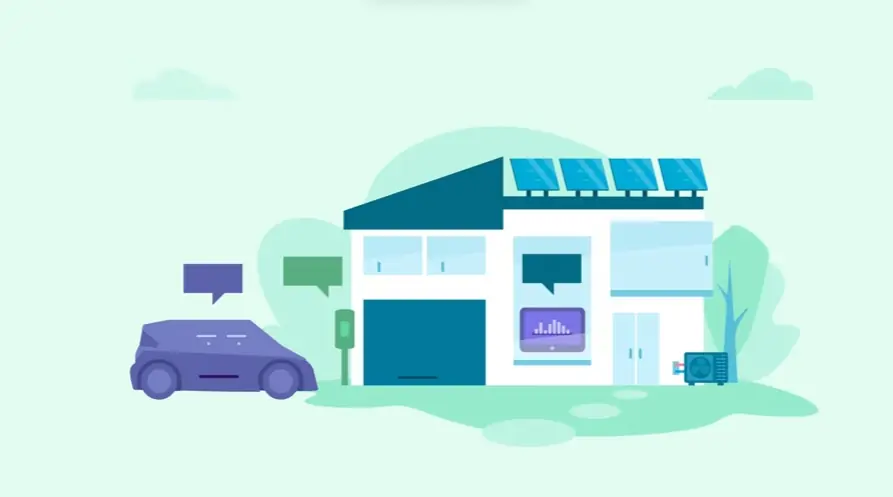The Strategic Edge: Planning for Software Screencast Success
Beyond the mechanics of capturing activity, mastering the Software Screencast Video involves a strategic planning mindset. Creators understand aligning their purpose deeply with target audience needs sets the foundation for impact. This strategic edge means meticulously mapping the viewer journey, crafting compelling narratives that resonate, and planning those crucial opening moments to immediately capture attention. It is about ensuring every click shown and every word spoken serves a larger objective, guiding viewers towards understanding and desired actions with clarity and intent from the very first frame.
Planning extends to building layered engagement into the viewing experience. They consider how viewers might interact beyond passive watching, perhaps through integrated checkpoints or opportunities for deeper exploration. Designing interactive product demos empowers users to discover value firsthand, moving beyond simple demonstrations to personalized journeys. This strategic layer involves selecting features that allow for dynamic variables and tailoring the content flow based on viewer choices, making the experience more relevant and memorable.
Crucially, a strategic approach embraces broader reach and continuous improvement. This includes planning for comprehensive software localization to connect authentically with global markets, adapting not just language but cultural nuances. Equally vital is baking in video accessibility from the initial concept, ensuring content is usable for diverse audiences through captions, audio descriptions, and keyboard navigation. Finally, successful strategists plan how they will analyze engagement metrics not just to report numbers, but to gain insights into viewer behavior, identifying areas for optimization and refining their approach iteratively.
Design interactive paths empowering user exploration.
Strategically plan for software localization reaching global audiences.
Build comprehensive accessibility features from the outset.
Plan using detailed engagement analytics for iterative refinement.
This forward-thinking planning maximizes video effectiveness, ensuring resonance and driving tangible results.
Why Advids for Software Screencast Video?
At Advids, we create compelling software screencast videos that clearly explain your product and engage your target audience. With over 12 years of experience and more than 3400 satisfied clients, we've honed our expertise in transforming complex software functionalities into easy-to-understand visual narratives.
From Concept to Completion: Your Software Screencast Video Journey with Advids
Collaborative Approach: We work closely with you throughout the entire process, from initial concept development to final video delivery, ensuring your vision is brought to life.
Strategic Communication: We prioritize clear and consistent communication, understanding your specific needs, target audience, and brand identity to create a software screencast video that resonates.
Customized Solutions: Whether you need a concise product demo, an in-depth tutorial, or an engaging explainer video, we tailor our approach to meet your unique objectives.
Experience and Expertise You Can Rely On:
12+ Years of Proven Success: Our extensive experience, spanning over 3400 successful projects across various industries, speaks volumes about our ability to deliver results.
Trusted by Leading Brands: From startups to Fortune 500 companies, brands like Razorpay, Ola, Mercedes, the United Nations, Continental, and Mercer have entrusted us with their video needs.
Client-Focused Approach: Over 109 five-star Google reviews testify to our commitment to client satisfaction and our dedication to producing high-quality work.
Cutting-Edge Technology and Creative Storytelling for Software Screencast Videos:
275+ Successful Software Screencast Videos: We've produced over 275 impactful software screencast videos, demonstrating our deep understanding of this specialized format.
Captivating Narratives: Our skilled team of animators and storytellers craft engaging narratives that simplify complex information and keep viewers hooked.
State-of-the-Art Technology: We utilize industry-leading software and techniques to create visually stunning screencast videos that leave a lasting impression.
Ready to unlock the potential of Software Screencast Video for your business with the latest video design trends of 2024? Let Advids be your trusted partner in transforming your ideas into engaging and effective animated experiences.
Checkout some of the projects and work our team at Advids has been producing:
What is a Software Screencast Video?
A software screencast video is a digital recording of a computer screen's activity , often accompanied by audio narration, that demonstrates how to use software or a specific feature. It's like a visual guide, capturing everything from mouse clicks to software interactions, making it an effective way to teach and explain complex processes.
Software screencast videos are used for various purposes, including product demos, tutorials, training materials , and customer support. They can be used to introduce new features, walk users through specific tasks, or provide step-by-step instructions for troubleshooting common issues.
What do top Software Screencast Videos have in common?
Mastering software screencast videos requires a strategic approach focusing on user needs and clear communication of value.
clear objectives - Define SMART goals, aligning video content with business objectives.
- Ideal User Profile - Develop detailed user personas to tailor messaging effectively.
- Intuitive Navigation - Employ clear visual cues and on-screen prompts for seamless flow.
- Problem-Solution Focus - Showcase the software's value proposition through Compelling Narrative s.
- Feature Prioritization - Highlight features that address user pain points and deliver immediate value.
- Engaging Visual Design - Use dynamic visuals, micro-interactions, and branding consistency.
- Professional Production - Maintain consistent lighting, framing, and editing for a polished look.
- Practical Applications - Use real-world examples and relatable scenarios to demonstrate software utility.
- Demonstrated Success - Quantify results with data, statistics, or customer testimonials.
- strong call to action - Use clear, concise language and visually prominent placement for maximum impact.
What makes Software Screencast Videos effective?
A captivating way to make Software Screencast Videos effective is to create engaging content ates with viewers. This involves understanding the target audience's needs and tailoring the video to their specific interests.
Methods for creating effective Software Screencast Videos include using clear and concise language, incorporating visuals and animations, and providing a clear call to action. These elements work together to ensure that viewers understand the information presented and are motivated to take the next step.
How long should your Software Screencast Video be?
Optimize software screencast video length for maximum impact by aligning video type, content, and viewer engagement.
Pre-production Considerations for Determining Video Length:
- What's the video's core message?
- Who is the intended viewer?
- How many features are crucial?
- How intuitive is the software?
- Where will the video reside?
- What's the video's call to action?
- What style best suits the message?
Software screencast video length guide
| Software Screencast Types | Video Length | Use Case | Funnel |
|---|
| Tutorial Screencast | 1-2 minutes | Clearly explains a core software function, step-by-step, using on-screen annotations and a concise, friendly tone. | Awareness |
| Product Demo | 1-2 minutes | Showcases key features and benefits, highlighting user experience with engaging visuals and a fast pace. | Consideration |
| Software Overview | 30-60 seconds | Provides a high-level understanding of the software's purpose and capabilities, using a dynamic montage style. | Awareness |
| Feature Highlight | 30-45 seconds | Focuses on a single, compelling feature, demonstrating its value proposition with a clean, minimalist aesthetic. | Consideration |
| Quick Start Guide | 15-30 seconds | Quickly guides users through initial setup and basic usage, using clear, concise instructions and a simple visual style. | Conversion |
How to create Software Screencast Videos?
Crafting compelling user interface demo videos requires a strategic approach that prioritizes clarity, engagement, and a deep understanding of your target audience. Mastering these key phases ensures your video effectively communicates the software's value and drives conversions.
* Define Audience - Target specific user personas to create a demo that resonates with their needs.- Content Strategy - Prioritize showcasing the software's most valuable features and benefits.
- Software Preparation - A clean, uncluttered interface enhances the viewer's focus and understanding.
- Scriptwriting - Use concise language, focusing on user benefits and avoiding technical jargon.
- Screen Recording - Use high-resolution recording to capture crisp visuals and fine details.
- Voice Recording - A clear, confident voiceover builds trust and improves comprehension.
- Video Editing - Precise editing ensures a smooth, professional flow, maximizing viewer engagement.
- Visual Enhancements - Strategic use of visual cues guides the viewer's attention and clarifies complex steps.
Measuring the Effectiveness of Software Screencast Videos
Now that we've covered creating compelling software screencast videos, let's dive into measuring their success. After all, we want our videos to make a real impact, right? Understanding how your audience interacts with your content is key to refining your strategy and achieving your goals.
Analyzing metrics goes beyond vanity numbers like view counts. It's about understanding what resonates with your viewers and drives desired actions. For instance, high-quality product demo video examples can significantly boost your conversion rate , while interactive software videos benefit from heatmap analysis to understand user interaction.
Let's explore key metrics to gauge your video's performance:
- Engagement and Reach: Track view counts for overall reach, but delve deeper with watch time and audience retention. A high view count with low watch time for software screencast video samples might indicate a disconnect between the thumbnail and the content itself. Pay attention to play rate as well, as it reflects your thumbnail's effectiveness.
- Conversion and Action: Click-through rate (CTR) measures how effectively your calls to action drive viewers to desired destinations. Conversion rate tracks how many viewers complete desired actions, like signing up or making a purchase. These metrics are crucial for assessing the ROI of your software demo videos.
- Qualitative Feedback and Sharing: Don't underestimate the power of qualitative feedback. Comments and social shares provide valuable insights into audience sentiment and content shareability. Analyzing these metrics can help you create even more engaging content in the future.
By tracking these metrics and experimenting with A/B testing, we can continuously optimize our videos for maximum impact. Remember, data-driven decisions are the key to successful video marketing.
Choosing the Right Animation Style for Software Videos
Having explored video metrics, let's discuss animation. Choosing the right style can transform your software videos from informative to truly captivating. Imagine a user scrolling through countless videos – yours needs to stand out. The right animation style grabs attention and keeps viewers engaged.
We aim to create videos that not only inform but also resonate with our audience. This means understanding the nuances of each animation style and how it aligns with our video's purpose and target audience. Think about it – a complex 3D animation might not be suitable for a quick tutorial, while a simple screen recording might not showcase the full potential of a cutting-edge software.
- 2D animation shines in software tutorial video examples, offering clarity and affordability. Think explainer videos breaking down complex processes step-by-step.
- For the best software screencast videos, 3D animation brings products to life, showcasing their features in a realistic and engaging way. Imagine a virtual tour of your software's interface.
- Motion graphics elevate software feature videos by dynamically visualizing data and key functionalities. Think eye-catching charts and graphs highlighting performance metrics .
- programmatic advertising videos benefit from tailored animation styles that resonate with specific demographics, maximizing campaign reach and impact.
We want our videos to be memorable, shareable, and ultimately, effective. By carefully considering the animation style, we can ensure our message resonates with our target audience and drives the desired action.
Using Data to Improve Software Screencast Videos
Now we've explored creating compelling software screencast videos , let's discuss improvement using data. Analyzing metrics helps refine strategies, achieve goals, and create truly engaging content. We'll explore key metrics to gauge video performance and learn how to use these insights to make our videos even better.
Data empowers us to understand what resonates with our audience. For application screencast video examples showcasing specific features, A/B testing different calls to action can reveal what truly motivates viewers. Think about it – are viewers clicking "Learn More" or "Get Started"? This data helps us tailor our approach. When creating software screencast video examples, analyzing watch time is crucial. A high view count with low watch time might indicate a disconnect between the thumbnail and the content itself.
- Track play rate to assess thumbnail effectiveness. A compelling thumbnail is the first impression; let's make it count!
- Measure conversion rates for desired actions, like sign-ups or purchases. This directly reflects the impact of our videos on business goals.
- Gather qualitative feedback from comments and social shares. What are viewers saying about our videos? This valuable insight helps us understand audience sentiment.
- Explore the potential of Animated software tutorials for explaining complex processes, tracking user interaction with heatmaps to optimize engagement. For effective Software onboarding Videos, measure conversion rates to assess their impact on user adoption.
Data-driven decisions are the key to successful video marketing. By analyzing these metrics and experimenting, we can continuously optimize our videos for maximum impact. Let's use data to create videos that truly resonate with our audience and drive results.
Optimizing Software Videos for Different Platforms
Let's talk about tailoring our software videos for different platforms. Think about it – a video that shines on YouTube might fall flat on TikTok. Each platform has its own unique vibe and audience, so we need to adapt our approach. Imagine a SaaS screencast video example designed for LinkedIn – it would differ significantly from a 2D animation software video example intended for a younger audience on TikTok.
We want our videos to resonate, right? That means understanding where our audience hangs out and what kind of content they crave. A quick product demo might be perfect for Twitter, while a comprehensive application walkthrough video could thrive on YouTube.
- Platform Focus: Consider your target audience. Are they business professionals on LinkedIn? Or creative individuals on Instagram? Tailor your content accordingly. For software marketing videos , Facebook and Instagram can benefit from targeted advertising to reach specific demographics.
- Length Matters: Keep it snappy on fast-paced platforms like TikTok. Longer videos work well on YouTube, where users often search for in-depth tutorials. Think about creating application walkthrough videos specifically for your YouTube channel.
- Mobile-First: Most people watch videos on their phones. Optimize for mobile viewing with clear visuals and concise messaging. Vertical or square videos work best on platforms like TikTok and Instagram Stories. Don't forget captions! Many viewers watch without sound.
- Visual Appeal: Grab attention with eye-catching thumbnails. A compelling thumbnail is the first impression – let's make it count! Tailor calls to action to each platform. Encourage viewers to "Swipe Up" on Instagram Stories or "Visit our Website" on YouTube. 2D animation software video examples can be highly effective on platforms like YouTube, where users often search for tutorials and inspiration.
By tailoring our approach, we can ensure our software videos reach the right audience and make a real impact.
Managing Expectations During Software Video Production
Creating software screencast videos involves careful planning. Let's explore how to manage expectations and navigate the production process effectively. We've covered a lot about creating compelling videos, but setting realistic expectations is crucial for a smooth experience. Think of this as our guide to navigating the exciting, sometimes challenging, world of software video production.
We all want our videos to be perfect, but remember, it's a journey. Flexibility and open communication are key. Let's dive into some practical tips for setting ourselves up for success.
- Define clear objectives. Before we even start storyboarding, we need to know what we want to achieve. Is it a product demo showcasing new features, or a software training video onboarding new users? Having a clear goal guides every decision.
- Budget wisely. Software animation video examples can range from simple screen recordings to complex 3D animations. Consider your budget early on and choose an animation style that aligns with your resources. High-quality product explainer videos can be a worthwhile investment.
- Plan your timeline realistically. Creating compelling videos takes time. Factor in each stage, from scriptwriting and voiceover recording to animation and editing. Rushing the process can compromise quality.
- communicate effectively . Regular check-ins with your team or production company keep everyone on the same page. Open communication helps address challenges early on and ensures a smoother workflow.
Creating effective software videos is an iterative process. By managing expectations and embracing feedback, we can create videos that truly resonate with our audience. Remember, every video is a learning opportunity. Let's use these tips to create videos that inform, engage, and inspire.
Author & Editor Bio
A video producer with a passion for creating compelling video narratives, Jai Ghosh brings a wealth of experience to his role. His background in Digital Journalism and over 11 years of freelance media consulting inform his approach to video production. For the past 7 years, he has been a vital part of the Advids team, honing his expertise in video content planning, creation, and strategy.
His collaborative approach ensures that he works closely with clients, from startups to enterprises, to understand their communication goals and deliver impactful video solutions. He thrives on transforming ideas into engaging videos, whether it's a product demo, an educational explainer, or a brand story.
An avid reader of modern marketing literature, he keeps his knowledge current. Among his favorite reads from 2024 are "Balls Out Marketing" by Peter Roesler, "Give to Grow" by Mo Bunnell and "For the Culture" by Marcus Collins. His results-driven approach ensures that video content resonates with audiences and helps businesses flourish.




